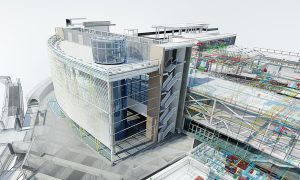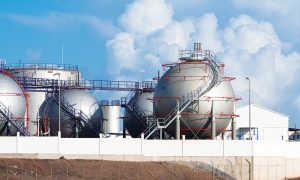Expert opinion: Complex EPC environments getting a reboot with AI
Paul Donnelly, director, Industry Marketing, AspenTech. argues artificial intelligence will smarten up EPC laggards

As we move ahead into 2020, the future for the engineering, procurement and construction (EPC) sector continues to look neutral, writes Paul Donnelly, director, Industry Marketing, AspenTech.
The market is mixed with some firms performing well while others are lagging. Factors weighing on the industry include ongoing cost pressures, difficulties finding experienced engineers and inconsistent financial results from fixed bid projects.
In response to the mixed environment and continued industry pressures, many EPC firms are looking to technology to help catalyse growth and profitability. The use of Artificial Intelligence (AI) can help break down barriers holding this segment back.
During 2020, we expect to see AI have the biggest impact in three areas: increasing engineering productivity, improving the quality of designs and attracting talent and guiding design.
Increasing Productivity
Sequential, paper-based processes still dominate EPC design and engineering workflows and the results are predictable: errors, re-work and costly, time-consuming manual intervention for dealing with the inevitable changes and revisions. Here’s how AI can help – instead of relying on paper to transmit engineering work product, that same information, stored in a database, can be centrally managed and updated and then queried as needed for the most up-to-date project information. AI will be used to set up and generate project deliverables from the database and/or deliver data electronically to other engineering systems that are used to further develop the design. Based on the experience of our customers, AspenTech believes that this can shave 30-50% off the effort required to complete FEED deliverables alone.
Improving Design Quality
How do you measure the quality of a plant design? There are numerous ways, but chief among them include how much capital is required to deliver a plant that meets the owner’s requirements, how much the plant will cost to operate and how often it will break down. The current ‘state of the art’ approach to finding optimal designs is to establish design envelopes considering several data points representing a range of potential operating conditions. Examples of conditions considered include operating temperatures, ambient temperatures, feedstock composition and different materials of construction. The number of data points considered is limited due to the time and effort required to model unique condition states.
Going forward, instead of consideration of a few data points for each of these key variables, entire potential operating ranges will be considered simultaneously. This “multi-case” approach will use AI and high-powered computing to run thousands of simulations very quickly, enabling the design team to generate a higher-quality design based on global optimums. This will result in higher customer satisfaction and more repeat business for the EPC, not to mention the benefit to society from plants that run more safely and more sustainably.
Talent Acquisition & Design Guidance
Qualified engineering talent isn’t easy to come by and younger engineering staff often lack the experience or the background to have an immediate impact. AI will be used to relieve these newer engineers from many mundane tasks, freeing them up to focus on true engineering and design challenges. This in turn will make these jobs more attractive to prospective employees and will aid in retention of more experienced workers.
AI will also allow design and engineering work to be more easily augmented by a richer set of data including customer requirements, local codes, previous designs and actual operational data. Together these data will help guide engineers to more optimal designs, faster. But accessing and sifting through all that data in a reasonable timeframe requires rules, machine learning and AI to implement.
Moreover, cognitive guidance driven by AI will allow firms to distill the experience of their experts and make that experience accessible across the firm in the form of best practices and firm standards. As engineers are developing designs, they can receive automated guidance and be alerted to opportunities to improve the design, or as importantly, be warned if an approach could lead to dangerous operating conditions.
Summary
The EPC industry continues to be comprised of leaders and laggards. This next wave of AI enabled opportunities for efficiency gains, design quality improvements and improved outcomes through augmented design has the potential to create even more separation for the leaders, but also to push laggards into a leadership position. It can also help attract and retain key talent that will surely be needed to address the pressing challenge of meeting today’s needs for energy and materials without undue compromise to future generations.






















